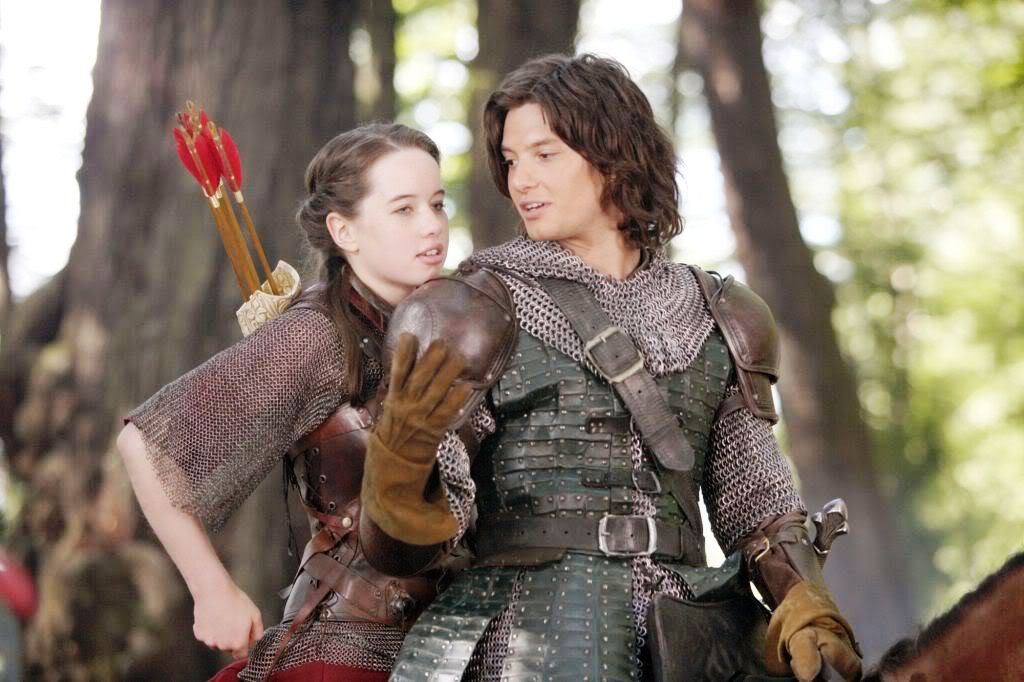As I recently outlined (in part 1), the three Narnia films (“The Lion, the Witch, and the Wardrobe,” “Prince Caspian,” and “The Voyage of the Dawn Treader”) offered fans and casual viewers much to enjoy. The story, casting and technical elements were generally good, and I’d argue that overall the films got more right than they got wrong. Having reviewed five highlights of the Narnia trilogy, its time to take a look at the lowlights.
Here are my thoughts, in no particular order:
Prunaprismia in Childbirth. An early newspaper ad for the Narnia films said, “There are a thousand stories in the land of Narnia.” True. There are also at least a thousand ways to begin a Narnia movie, and depicting a woman in childbirth is not now, nor should it ever be, one of them. Remember the scream, that zoom in shot on Prunaprismia’s sweaty face? At that moment I knew the Narnia films might have gone off the rails. (Silly me.) Would it really have been that difficult to show Caspian learning about Narnia? To wedge the Nurse character into the film? Even Andrew Adamson jokes about PC’s opening on the director/cast commentary. You really have to wonder what he was thinking.
The Disastrous Plot Contrivance. Ah, yes, the arrogantly-conceived, poorly-executed “romance” between Prince Caspian and Susan. I say “arrogant” because it is one of several instances throughout the films (especially in PC and VDT) where the director either felt he knew better than Lewis or believed it was necessary to plaster Hollywood sensibilities on a classic piece of literature. Lewis didn’t drum up any physical attraction between Caspian and Susan in the book, likely because he knew it would stick out like a sore thumb. Also, it wasn’t really necessary to the story (but then again, if they’re going to invent villains, why not romance?). Not surprisingly, the glances, dumb jokes and the so-bad-its-impossible-to-describe kiss between Caspian and Susan looked terribly out of place in the film version of PC. And it wasn’t even realistic. What teenage girl wants her first kiss with a particular boy to be on full display in front of her two brothers, her little sister, hundreds of strangers and a messianic lion? (Especially one who exhibits some antisocial traits at the beginning of the film?)
The Green Mist. “There’s no villain in Dawn Treader.” Various people attached to VDT repeated this truism about a million times. While the book does lack a villain, that does not by itself require that one be added. Was there a villain in “Forrest Gump?” Who was the enemy in “Where the Wild Things Are”? Was a bad guy (girl) really that central to the plot of “Bridge to Terabithia”? Let’s go even further back: Did “My Girl” have an antagonist? But if you insist, and if you’re going to pull forward material from SC, why not go all out and bring in the Lady of the Green Kirtle? The hybrid attempt – using the White Witch from LWW and PC, but using the literal color of the villain from SC – just doesn’t compute. I’ve inadvertently skipped some of the green mist scenes while watching the VDT Blu-ray, and you know what? I like the film better. I didn’t stand up and exclaim, “Why are they sailing?! What’s the point?!” The CGI on the mist was not the best, either. (And speaking of green concepts that don’t belong, PC is not about global warming or environmentalism. Someone memo that to Andrew Adamson. The trees in PC were not fighting back over carbon emissions, nor were the ents from “Lord of the Rings.” Some of Adamson’s revelations on the director’s commentary for PC are downright strange.)
Longing for Longing. There were a lot of characters in VDT – too many, because all of them needed servicing. In a fast-paced film of less than two hours, the unfortunate but inevitable result was “mile wide, inch deep” character development. Very early in the film, Reepicheep expositions to Lucy that he longs to see Aslan’s country. Excellent; this is a clue that the screenwriters actually read the book. But viewers aren’t treated to anything further on the mouse’s lifelong yearning until the film is almost over. I half expected Aslan to say “This is the entrance to my country, which Reep here mentioned two acts ago.” And another thing. Caspian doesn’t say much about wanting to be a better king, but he suddenly promises to be one at the end of VDT. Huh? And that brings me to …
Repetition. Have you noticed that all three Narnia films take advantage of an overused device in the final act, i.e. the breakaway? During battles in LWW, PC and VDT the on-screen action stops in order to show a tender moment involving Aslan. There’s nothing wrong with that in principle, but it does get old after seeing it in ALL THREE MOVIES at roughly the same point in the story’s progression. While we’re at it, Caspian promises to be a better king twice, but why? I get his promise at the end of PC, but VDT? Just an hour and a half earlier, Caspian informed Edmund and Lucy that all of Narnia was at peace. Caspian also had the foresight to keep Edmund from monetizing the goods on Deathwater Island. Sounds like a good king to me.
And there you have it! Add your thoughts in the comments section…

